I’ve written about how, in general, I think the Aussie startup investment industry is doing pretty well following the release of the Cut Through Ventures 2023 State of Startup Funding report, despite all the volatility of recent years.
I’ve also written about some of the more interesting revelations of the report which really highlighted how investors and founders are looking to meet different needs (h/t Jo Thomas for that framing).
In this third post, I’ll focus on the areas where I think we need to do better, much better.
Parallel Universe
It’s pretty clear that we have two parallel universes happening in the Australian (and to be fair, global) startup sector. One if you are white and male, and one for everyone else.
Yes, I am aware that sentence is going to make certain people in the ecosystem who think this is a meritocracy/don’t believe there is any bias have an aneurysm, but the data is the data.
Let’s first look at the perception different groups have about the confidence in raising capital, then lets look at what’s actually happening.
Firstly, the founders surveyed were overwhelmingly male (82%) and white (53%). Is this a reflection of the general ecosystem?
I don’t know for sure, but there is other data that suggests at least 25–30% founders are women (According to statista: a survey conducted between July and August 2023, around 27% of respondents who stated they were startup founders in Australia were female), so this survey is probably a little biased towards male founders.
As for the ethnicity, I don’t know if that data has been previously captured for the ecosystem, so will assume for now this is reflective of the broader ecosystem.

However, if you look at the perception each of these groups have on their feelings of support or perhaps framed a different way as belonging within the startup ecosystem or their access to capital, there are clear differences.
For women, the overwhelming majority (75%) believe their gender impacts their ability to raise capital, and an almost the identical percentage do not feel supported by the wider Australian entrepreneurial community.
Almost half of women do not feel supported by their investors, and only half as many women as men, believe they have funding options available to them.
This is not the perception of the majority of men.
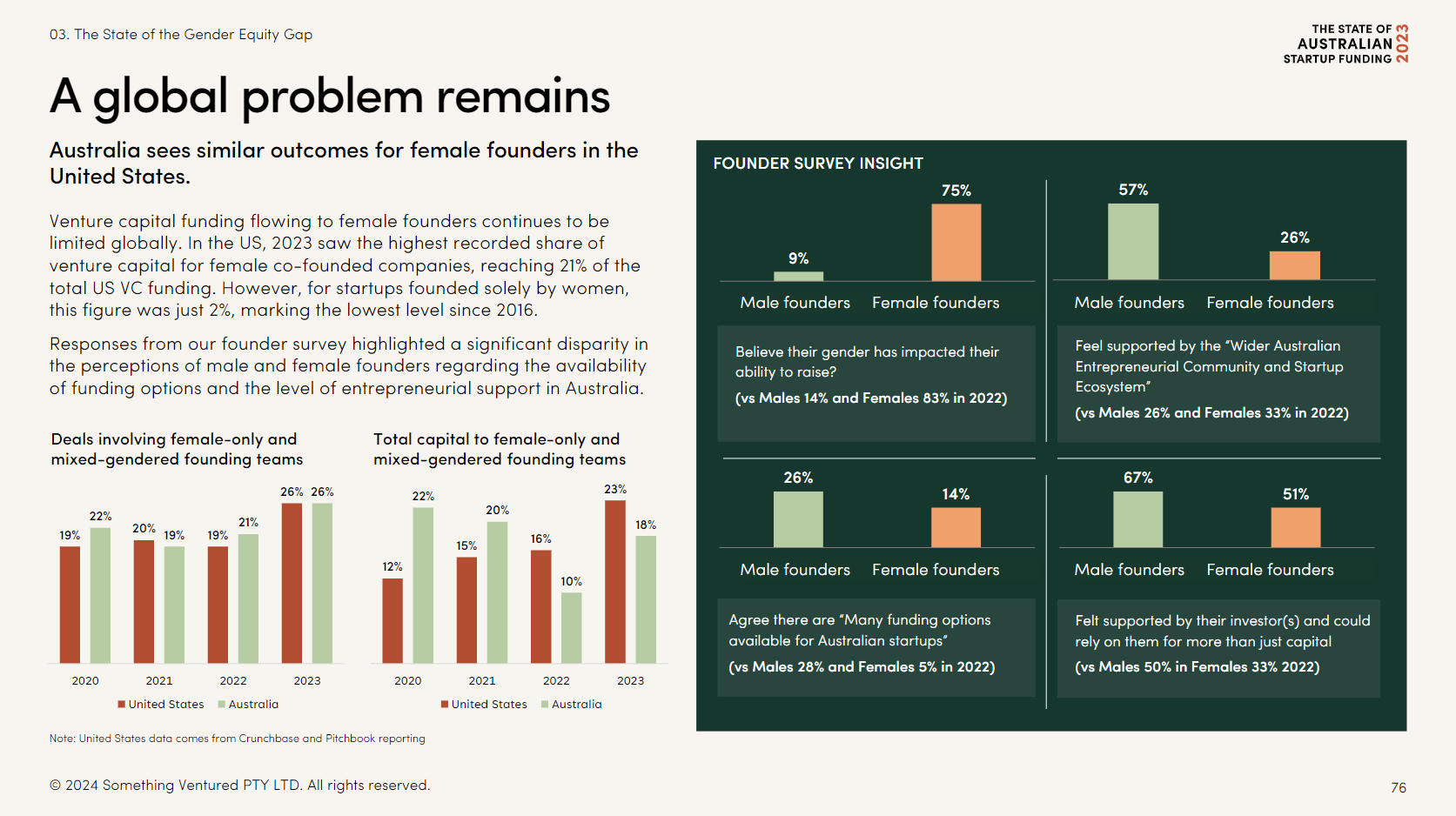
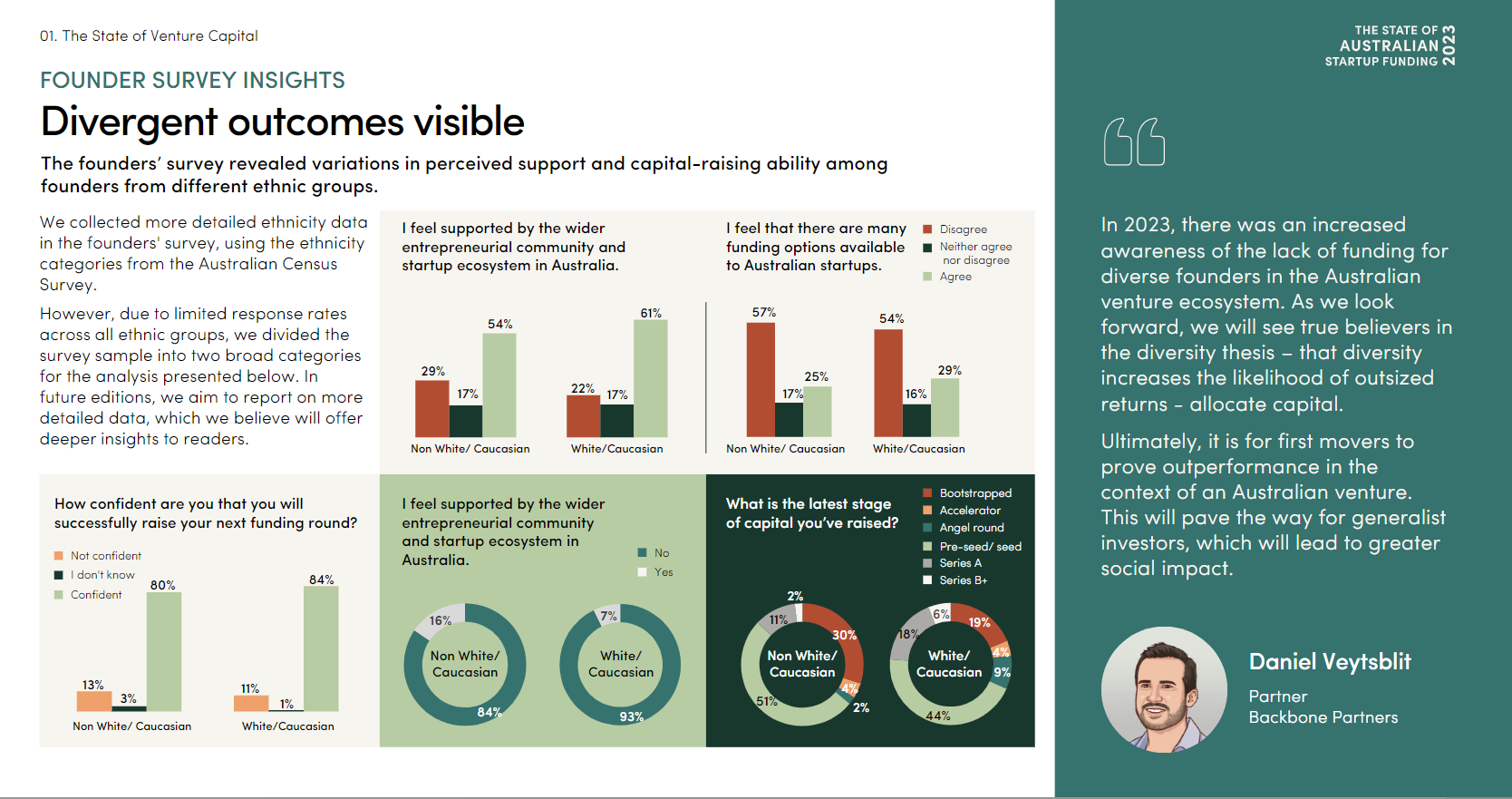
On the ethnicity side, while the gap is much smaller, it still shows that founders from diverse ethnic backgrounds perceive a disparity in both the support from the ecosystems and their ability to raise capital.
Now lets look at reality, in so far as the data allows (as the data will not demonstrate how supported diverse groups actually are). And the results are…..complex.
Women are, on a deal number level actually probably being funded to the same level as their representation in the ecosystem. If you look at the data, 26% of deals involved a woman founder.
If 27% of founders are women, then that’s probably about where you would expect this data point to fall out.
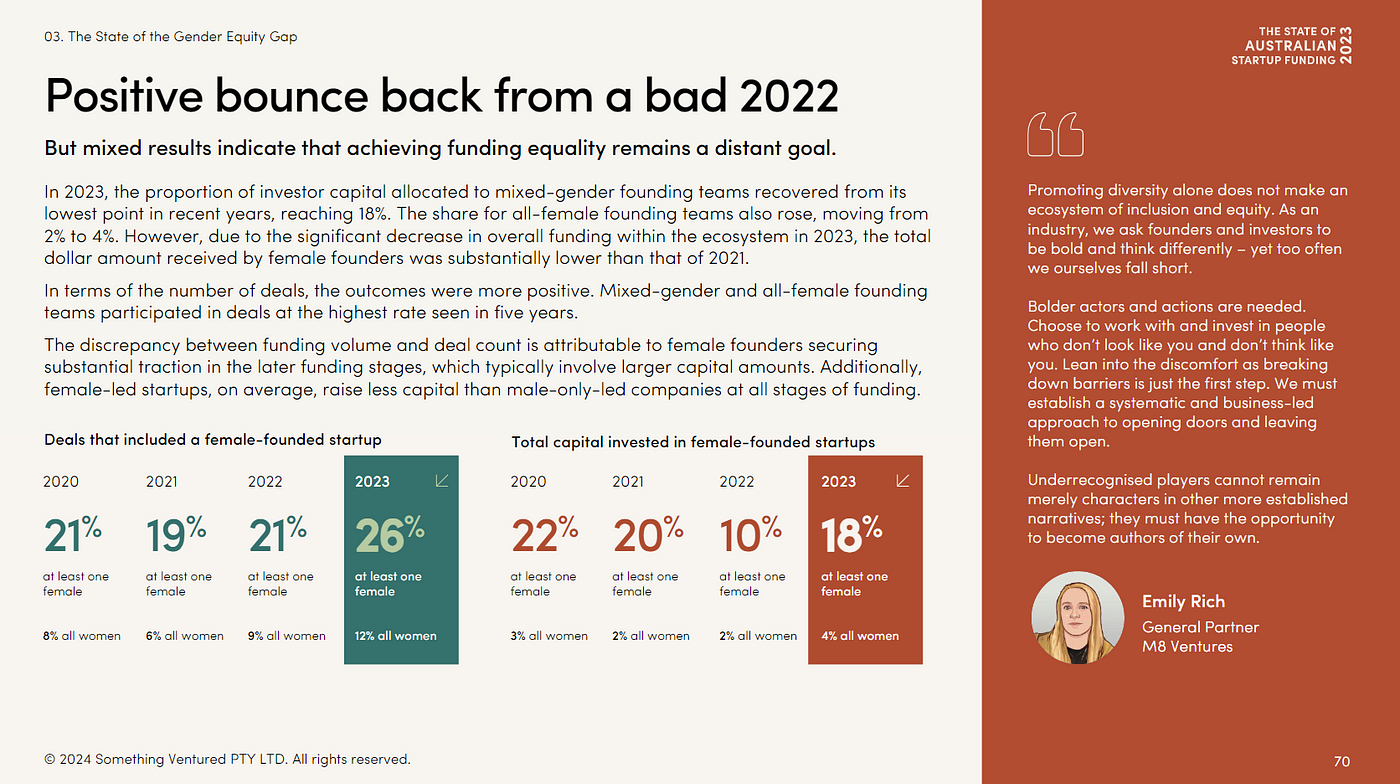
However, the data point that tells you to hold up on the champagne and poppers, is the female founder participation stats which shows the women penalty is still alive and well.
If you look at the median deal size by gender, then having a woman on your team means statistically speaking, you’ll raise 66% less capital in your round than if you are an all male team, and if you have an all woman team, then you’ll raise 75% less capital. Wowsers.
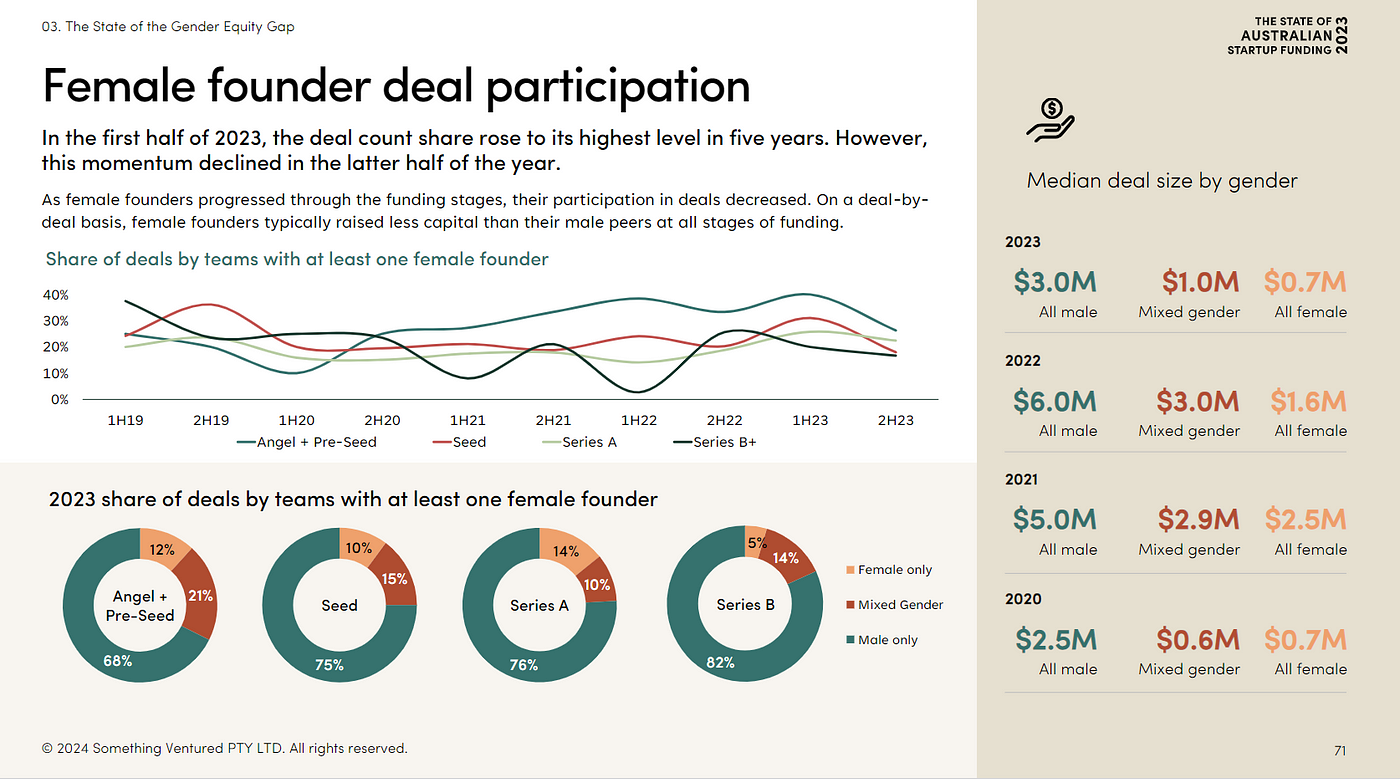
As always the devil is in the detail, but the reality is when women say they believe it is harder for them to raise money or they feel they have less options, the data says they are right.
This is also likely to be one of the reasons they no doubt feel less supported but it won’t be all about fundraising. Certainly we have seen over the last year how Australian women in the startup sector feel at risk of harassment, sexism and bullying. This has been reported many times. This data set about the worldwide tech industry, shows the impact of such issues which dispropotionately affect women:
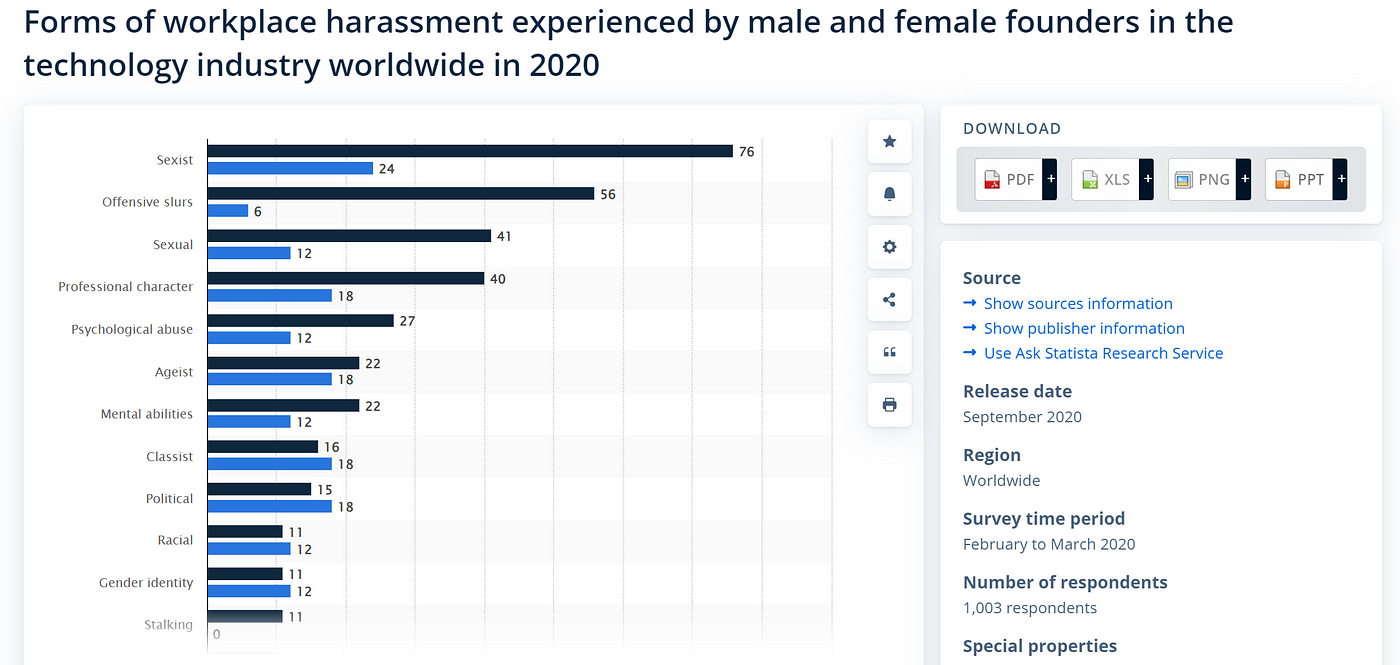
Additional data in the Diversity in Stem review undertaken by the federal government shows that the pipeline doesn’t start out so disproportionate, it begins to diverge at the entry into the workforce.
One of the reasons reported in that research were that women entering STEM workplaces (which tech is) found them to be hostile and toxic. This is why initiatives such as Grapevine and others have been stood up.
To help provide a path to education and a sense of support, given other well meaning approaches have not seemed to move the dial.
Even though this data set doesnt explictly address other bias, I have no doubt this is also true for people of colour. If we want to make sure we are atracting and retaining the best and the brightest, we have to make sure we create an environment that everyone has the opportunity to suceed in and belong to.
Does the ecosystem care?
How capital is allocated is of course in the control of the investors.
Do investors actually care? Do they think they are already investing in objectively the best and the brightest?
Do they believe increasing the diversity will improve outcomes, or do they think the investments they are making making deliver returns and thats good enough?
How inclusive and supportive the ecosystem is, is a function of us all.
I know the Bill Ackmans and Elon Musks are trying to make DEI a dirty word(s), but the data says the majority of investors are engaged with improving diversity with various initiatives outlined below.
The most common initiative investors put in place was to address the diversity in their own teams.
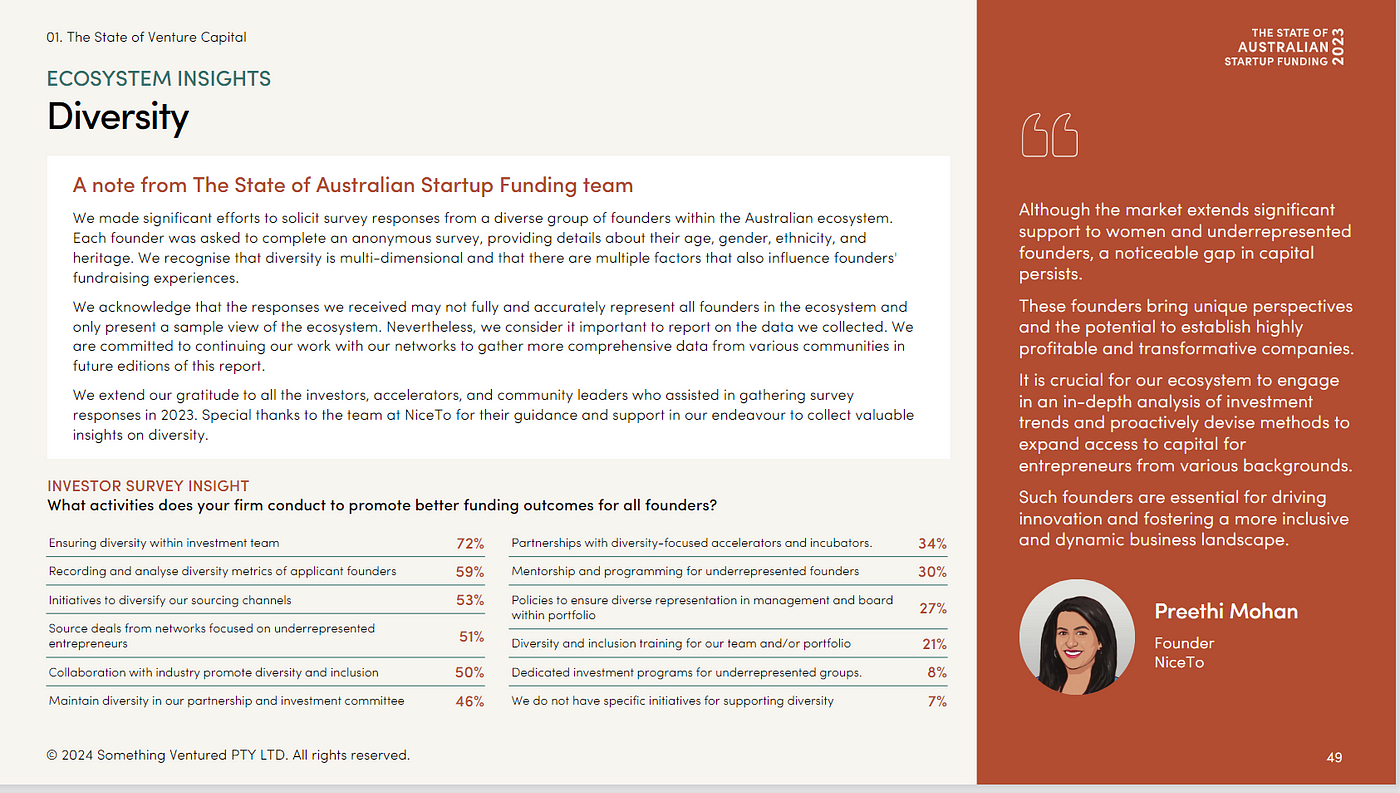
The percentage of women investors now reflects the percentage of women founders in the ecosystem, which is a positive change over the past ten years.
While correlation is not causation, it does seem like the gender representation between investors and founders at absolute levels has settled at its ecosystem ‘water level’ .
For now.
It’s still clear that the proportion of women in decision making/senior positions is not yet good enough. It’s also not good enough that we dont have parity representation of women founders and investors to their representation in society as frankly, there is no good reason they shouldn’t.
There is a disparity between the ethnicity of founders and the ethnicity of investors, with 70% investors identifying as white/caucasian, compared to 50% founders.
We didn’t see how the funding distribution compares to ethnicity in this report, but it would be interesting to see if there is a disproportionate allocation of capital to white founders, either in total deal count numbers or quantum of capital. Or more optimistically, if there isn’t, that would be a great counter data point to bias.
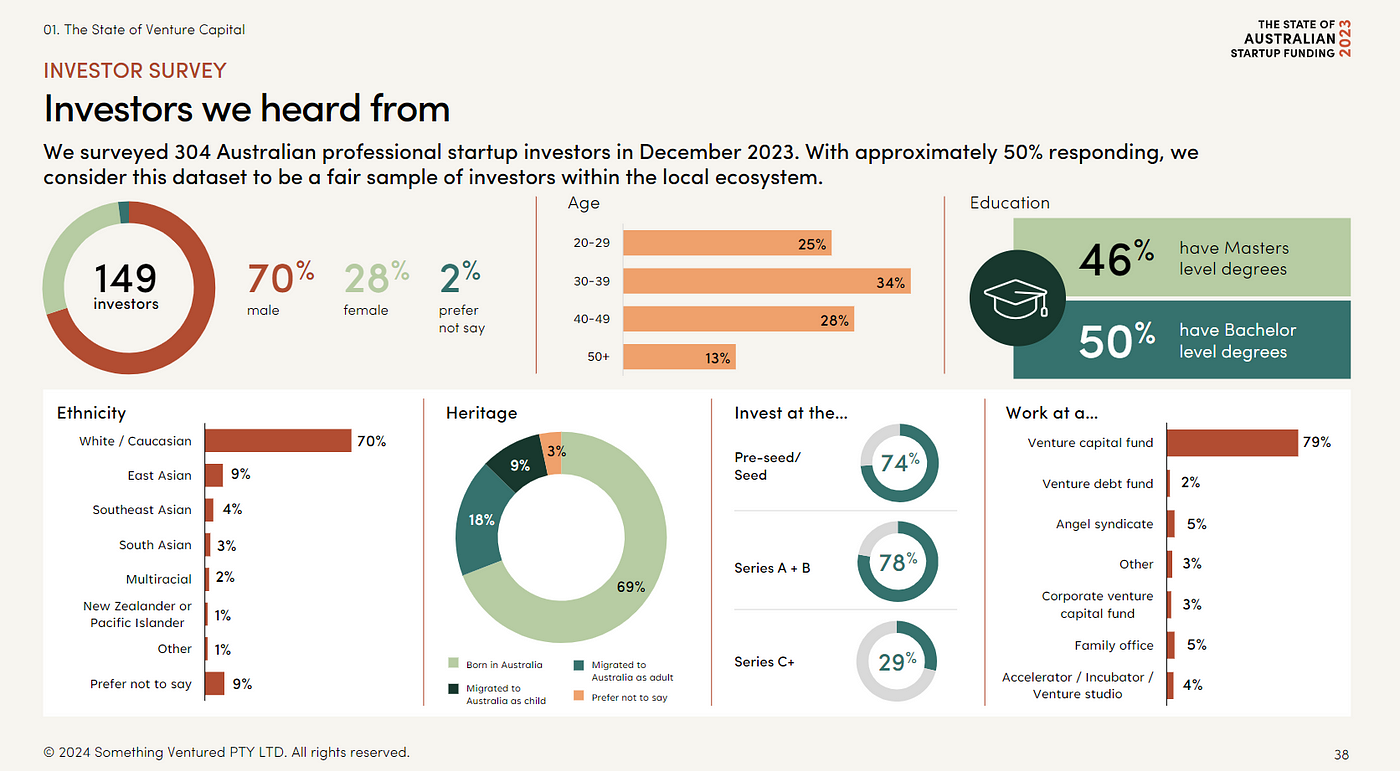
The second most common initiative was to record the diversity metrics. While measuring these metrics is important (the what), I also think it’s wholly insufficient unless its being paired with action that is being informed by that data (the how).
I was pleased to see the following two most common initiatives were to increase their access to deals from underrepresented founders or diversify deal sourcing channels.
It would be wonderful to see how the diversity of the deal funnel had changed as a result, so we can see if these initiatives are actually bearing fruit. It would be remiss not to mention the challenges our indigenous population clearly still face.
While there weren’t specific data sets to tease this out like there was for gender, this slide highlighted the unique challenges of this population.
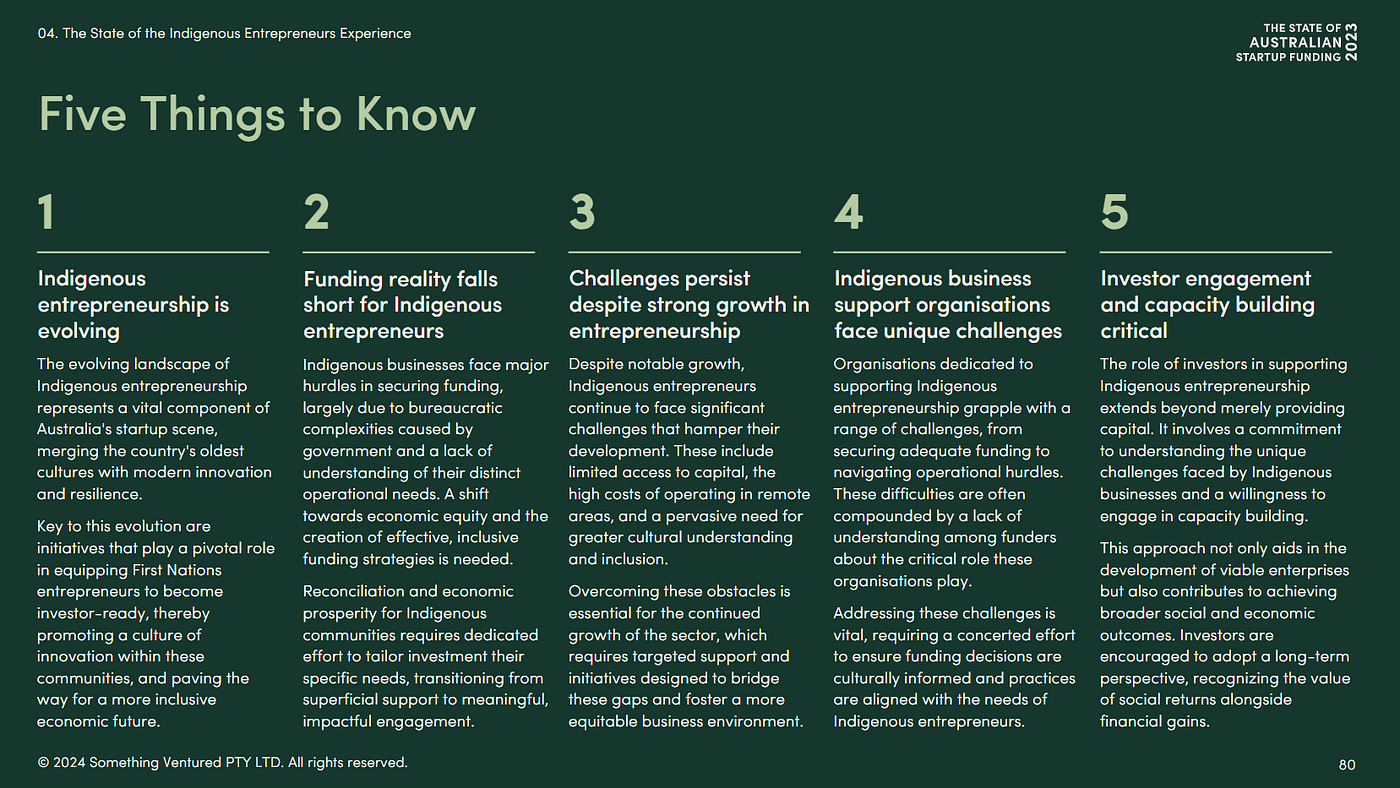
Slow improvements
As I have written previously, women founders are seeing incremental improvements, but the rate of change is glacial, and it feels like the lifting is extremely heavy, laborious work.
It is still not clear how other forms of underrepresented groups are faring although the data says they dont feel as supported as their white/caucasian counterparts.
There is no good reason that our ecosystem shouldn’t have diverse representation that reflects the broader society, except for disadvantage and bias.
It is a genuine travesty that for those who do persist, we have fairly large swathes of our ecosystem feeling unsupported within the industry they are seeking to succeed in and don’t feel they have an equal opportunity.
It’s a shame that in such a rich country with access to so many resources, we are losing access to our best and brightest in the industries which our country will be dependent on for its economic future.
I’m hopeful to see the genuine efforts investors are making, and I am grateful for initiatives like Dream venture Program, Grapevine and others which are seeking to improve support for underrepresented groups who today, clearly dont feel the confidence and opportunity.
I’m also glad we are collecting this data so we can monitor our progress, and tip my hat to Cut Through Ventures and everyone who participated in the survey, please keep doing it, the ecosystem needs you.




















Trending
Daily startup news and insights, delivered to your inbox.